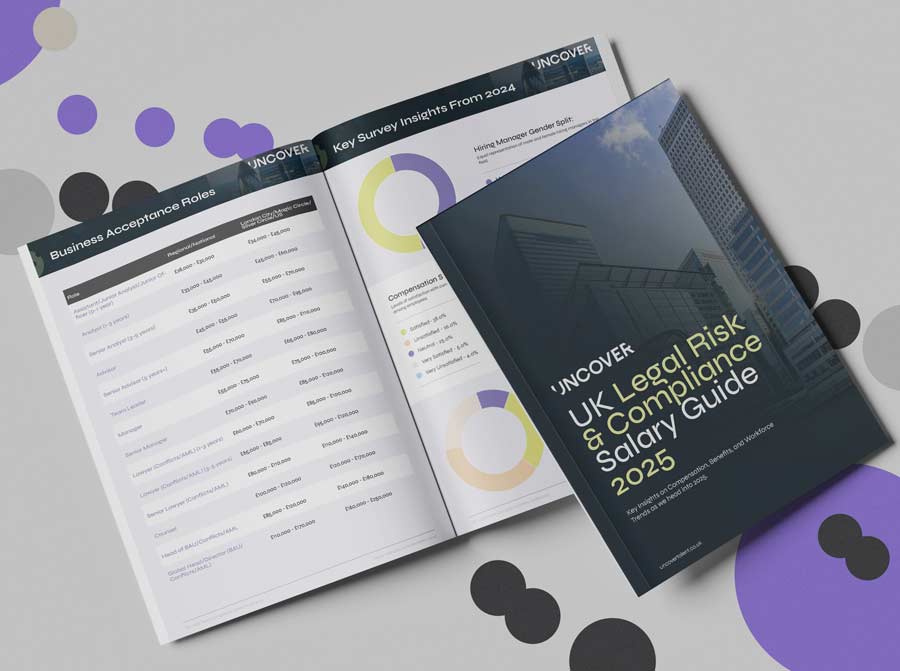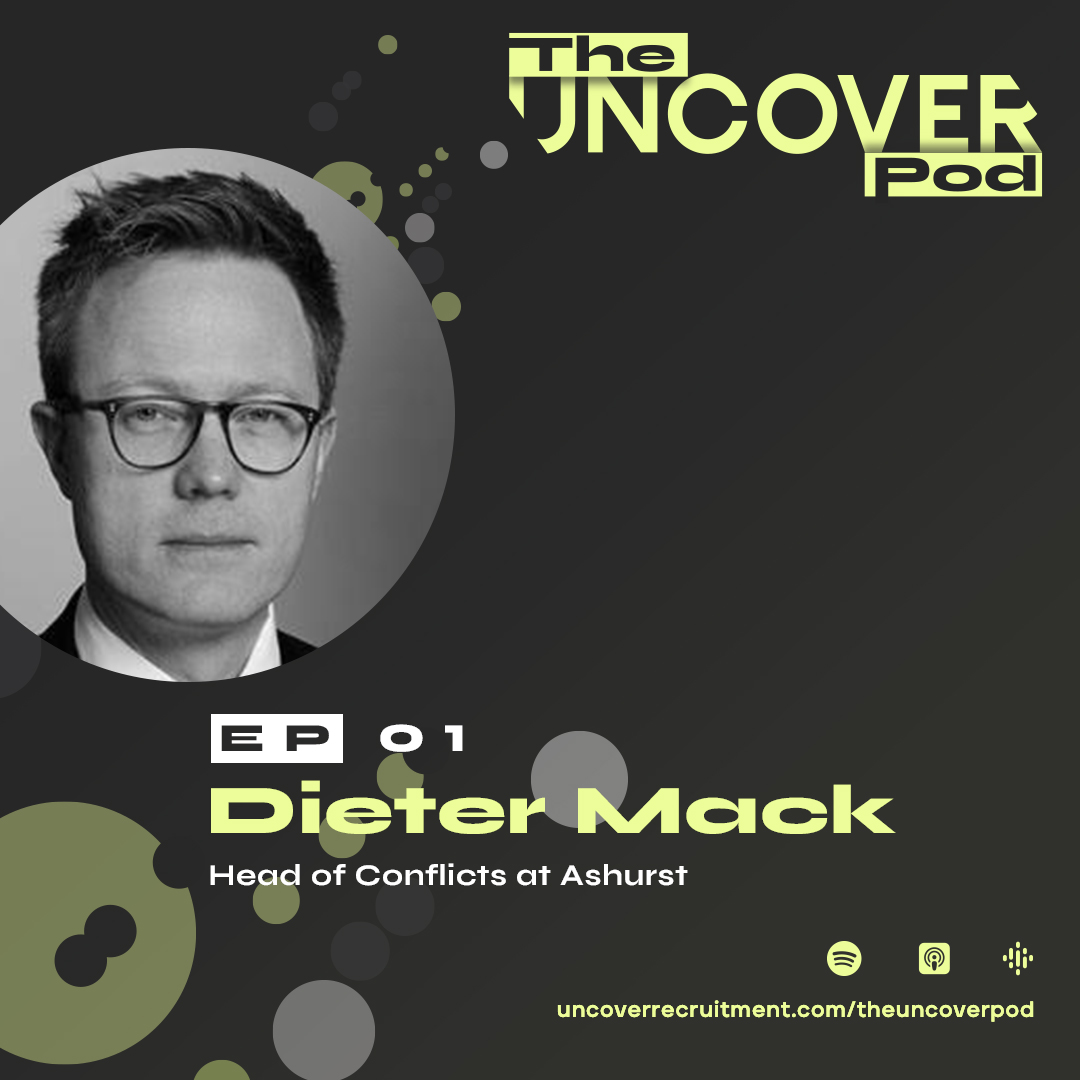Effectively managing your team is the key to getting the best from them. As a specialist Legal Risk & Compliance recruitment agency we often act as advisors for professionals who are going into leadership roles. On Episode 1 of the UNCOVER Pod we spoke to Dieter Mack, who is the Head of Conflicts, Ethics & Commercial Advisory at Ashurst. His unique approach to management has seen his team thrive, so we asked him for his insights on getting the most out of your people*.
How did you develop your management style, and how would you describe it now?
The last three years have changed what we considered our norms, and what we are managing for and against. The pandemic introduced us to thinking about the working space differently, from new technological solutions to the upheaval of typical, in-office, five-days-a-week working. As leaders we’re looking for the right solution for that. Every firm and manager has their own opinion, but from employee feedback we know that the general feeling is that there are great benefits from spending in-person time with your mentors. Trainees benefit most from extended contact time.
The Russia-Ukraine war has impacted our moral landscape as well, which we also have to consider when managing people. That’s changed our criteria for how we evaluate our clients, and how our clients evaluate us. The UN has shared its notes about human rights in business and explained how everyone has a responsibility to seriously consider human rights in the workplace. We’re now considering what privileges we gain from the detriments of others, whether it’s slave labour or less obvious issues. Every law firm is going to need to wrap its head around these new factors. Anyone working or interested in compliance is going to need to be comfortable and familiar with their reasoning criteria when we have these conversations with the stakeholders in the business.
When you’re looking at management in risk compliance, there are two general trends that you always have to look at, which are quantitative and qualitative management. Quantitative management is about ‘Are we able to deliver the SLA? How fast can we turn around the approval wherever it is required in the network? Etc.’ The qualitative aspect is about understanding the risks to the quality of your decisions. If you’re cutting corners and therefore the quality of your work, your team doesn’t get value or growth out of the role. Investments in the individuals you work with are the key to retaining a team that cares about each other and the business they’re in. You have to respond to all of those things to provide what I call human-led management.
How have you applied those things to the day-to-day management of your team?
I think of the human experience as the guide for my management style. That informs how we treat each other, tackle our daily work and create an optimised resource and cost allocation against the requirements of those tasks. When you have 100 problems, you might say, well, I need 10 people to work their full day to be able to solve these 100 problems for me on a daily basis. But that’s the wrong calculation. You actually need 12, because somebody is going to be sick, and somebody’s going to be on holiday. You also need to make the important assessment of what a human needs to feel that they’re valued, that they’re growing, and that they have a fair transaction in the contract that they enter into for the role.
It’s important to recognise the value of every person that is giving their day to work in your organisation or team. That value exchange needs to be very clear, insofar as that they need to be able to get the most out of their working day while they’re there. That puts an onus on management to go, ‘Okay, how do I meet my side of the bargain by providing you with the best working experience and transactional value? You should see progress in your development, so we will spend time on ensuring that I understand who you are, what you need, and how you can be at your best. When you’re at your best, you are working in a team that attains high performance in a happy way, not with an angry face.’ Being happy and healthy is the best way to get the best out of your team.
Approaching any situation, whether it is your interpersonal relationships, how you deal with challenges, etc, you need an open mind and happiness. That comes from good relationships with your peers and your team. It’s up to management to focus on ensuring that people’s needs are being met, because otherwise, naturally, some people will underperform, other people will notice, and resentment will build up. If you give people dignity, you lift each other up, you recognise the value of every human in your community and see yourself as having value, you’re making somebody else’s life better in your proximity, and that will lead to better things for you too.
How do you think your management contributes to the health of the firm?
It helps us retain and grow our talent. When people feel like they have purpose and that they’re challenged, we do better as a company. Nobody wants to be bored, because when you’re bored, you fall asleep at the wheel. We challenge people in a good, healthy and happy way with support around them. There are challenges, because money never comes from an endless pot. Any of those physical aspects or material needs have to be met, because otherwise people won’t survive in your company. After that, you need to focus on the very simple question, how can I be my best? It’s a continuous journey, but it’s one that relies on a community that is supporting and affirming each other, which is the healthiest way to be.
To hear more about effectively managing people in the Legal Risk & Compliance sector, tune into The UNCOVER Pod.
* Responses have been edited for length and clarity.




